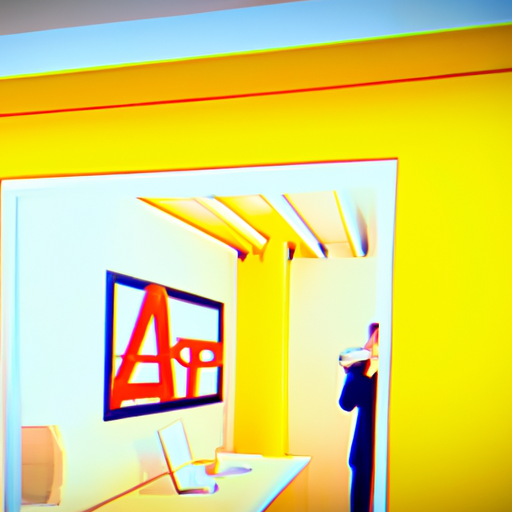
-
Table of Contents
- Architectural Illustration for Real Estate Marketing
- The Power of Architectural Illustration
- Creating Emotional Connections
- Case Studies: The Impact of Architectural Illustration
- Case Study 1: Luxury Condominium Development
- Case Study 2: Historic Building Renovation
- The Role of Technology in Architectural Illustration
- Key Benefits of Architectural Illustration for Real Estate Marketing
- Conclusion
Architectural Illustration for Real Estate Marketing

When it comes to selling real estate, first impressions matter. Potential buyers often make quick decisions based on the visual appeal of a property. This is where architectural illustration plays a crucial role in real estate marketing. By providing realistic and visually stunning representations of properties, architectural illustrations can captivate potential buyers and help them envision their future home or investment.
The Power of Architectural Illustration
Architectural illustration is the art of creating visual representations of buildings and spaces. It combines artistic skills with technical knowledge to produce accurate and aesthetically pleasing images. In the context of real estate marketing, architectural illustrations serve as powerful tools to showcase the potential of a property.
Unlike traditional photographs, architectural illustrations offer the flexibility to showcase a property in its best light. They allow for the removal of unwanted elements, the addition of landscaping, and the ability to highlight specific features. This level of control enables real estate professionals to present properties in the most appealing way possible.
Creating Emotional Connections
One of the key advantages of architectural illustration is its ability to evoke emotions in potential buyers. By presenting a property in a visually stunning and inviting manner, architectural illustrations can create an emotional connection with viewers. This emotional connection can significantly impact a buyer’s decision-making process.
For example, imagine a potential buyer looking at a simple floor plan of a house. While the layout may be functional, it may not evoke any emotional response. However, when the same floor plan is transformed into a beautifully rendered architectural illustration, complete with lush landscaping and warm lighting, the buyer can instantly imagine themselves living in that space. This emotional connection can be a powerful motivator in driving a sale.
Case Studies: The Impact of Architectural Illustration
Several case studies have demonstrated the positive impact of architectural illustration on real estate marketing. Let’s explore a few examples:
Case Study 1: Luxury Condominium Development
In a luxury condominium development project, the developer used architectural illustrations to showcase the high-end finishes and amenities of the property. By creating detailed illustrations of the interior spaces, including the luxurious kitchen, spa-like bathrooms, and panoramic views from the balconies, the developer was able to generate significant interest from potential buyers.
The architectural illustrations allowed buyers to visualize themselves living in the space and experience the lifestyle the development offered. As a result, the developer was able to sell a significant number of units before construction was even completed.
Case Study 2: Historic Building Renovation
In another case, a real estate company was tasked with selling a historic building that was undergoing renovation. The challenge was to showcase the potential of the property while it was still under construction.
The company commissioned architectural illustrations that depicted the renovated building in its full glory. The illustrations showcased the restored facade, the modernized interior spaces, and the vibrant neighborhood surrounding the property. These illustrations helped potential buyers envision the final product and understand the value of investing in the project.
Thanks to the architectural illustrations, the real estate company was able to generate significant interest in the property and secure pre-construction sales.
The Role of Technology in Architectural Illustration
Advancements in technology have revolutionized the field of architectural illustration. With the rise of computer-generated imagery (CGI) and virtual reality (VR), real estate professionals now have even more powerful tools at their disposal.
CGI allows for the creation of highly realistic and detailed architectural illustrations. By using specialized software, artists can create virtual models of buildings and spaces, complete with accurate lighting, textures, and materials. This level of realism helps potential buyers visualize the property with incredible accuracy.
Virtual reality takes architectural illustration a step further by allowing potential buyers to immerse themselves in a virtual tour of a property. By wearing a VR headset, buyers can explore every corner of a property, experiencing the space as if they were physically present. This technology has proven to be a game-changer in real estate marketing, as it provides an unparalleled level of engagement and interactivity.
Key Benefits of Architectural Illustration for Real Estate Marketing
Architectural illustration offers numerous benefits for real estate marketing. Here are some key advantages:
- Visual Appeal: Architectural illustrations are visually stunning and can capture the attention of potential buyers.
- Flexibility: Illustrations allow for customization and highlighting of specific features, making properties more attractive.
- Emotional Connection: Architectural illustrations can evoke emotions and help buyers envision themselves in the space.
- Marketing Advantage: Properties showcased with architectural illustrations stand out from the competition and attract more attention.
- Pre-construction Sales: Illustrations enable developers to sell properties before construction is completed, reducing financial risks.
- Virtual Reality: VR technology enhances the immersive experience, allowing buyers to explore properties in a realistic virtual environment.
Conclusion
Architectural illustration plays a vital role in real estate marketing by providing visually stunning and emotionally engaging representations of properties. By leveraging the power of architectural illustration, real estate professionals can create a strong impact on potential buyers, driving sales and generating interest in their properties.
With advancements in technology, such as CGI and VR, the possibilities for architectural illustration are expanding even further. These tools offer an unprecedented level of realism and interactivity, allowing buyers to experience properties in ways that were previously unimaginable.
As the real estate market becomes increasingly competitive, architectural illustration will continue to be a valuable asset for real estate professionals. By investing in high-quality illustrations and embracing new technologies, real estate professionals can differentiate themselves from the competition and provide potential buyers with an immersive and captivating experience.
